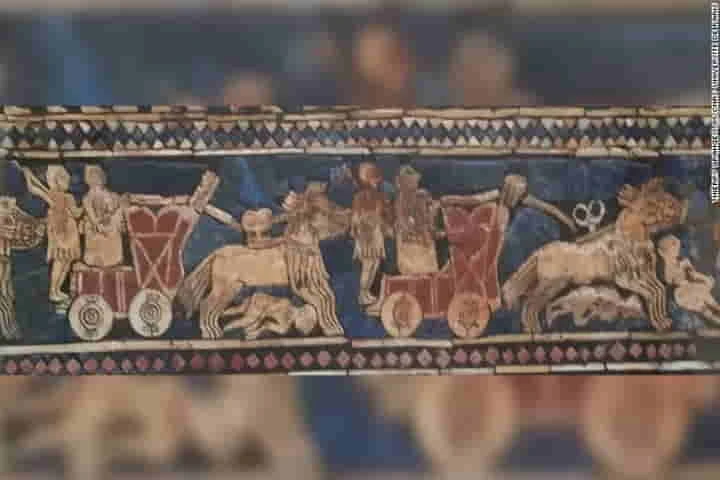With the help of DNA sequencing techniques, new research has brought to light the creation of the earliest hybrid animal by Mesopotamians – in the Bronze Age – called Kunga, according to a report in CNN World.
The creature which lived 4,500 years ago was sired by a Syrian wild ass while the mother was a donkey.
The kungas were described in texts and their visuals appear in the art of Mesopotamia as creatures used for drawing vehicles of the royalty and wagons of war but there was no clue about their identity. What perplexed the experts was the fact that domesticated horses had not appeared in the region till this time.
The fact that complete skeletons of these hybrid animals were found buried at Umm el-Marra in northern Syria, along with the remains of people of upper crust of the society, provides a clue about their exalted status. Further analysis of the teeth showed that they held a hit in their mouth and that they well looked after and fed.
For the scientists to conclusively pinpoint the animal with the help of the skeleton is tough since the bones of the mules, horses, asses and donkey all look very similar.
It is the analysis of the DNA drawn from the bones found in Umm el-Marra that disclosed that kunga was an animal which came into being by a cross between a donkey, domesticated by this time, and Syrian wild ass, also called onager or hemippe, which is now extinct.
According to the details of this study published in the journal Science Advances, the evidence of this creature makes it one of the earliest cases of hybrid breeding of animals. The species was created intentionally and then trained.
Airing his views about this, anthropological archaeologist at the University of North Carolina at Chapel Hill, Benjamin Arbuckle said: “Since hybrids are usually sterile, it means there was a remarkable level of energy devoted to constantly capturing and raising wild onagers, breeding them with domestic donkeys and then training these teams of prestigious kungas (which would only last for one generation).”
Arbuckle, who was not part of the study added: “It really shows the innovative and experimental nature of ancient people which I think some people only associate with the modern world and also their willingness to invest a lot of resources in the artificial creation of an expensive animal used only by and for elites."
According to the author of the research, Eva-Maria Geigl, before the advent of horses on the scene, the need for an animal for war was essential.
Head of Research at French National Center for Scientific Research (CNRS) at the Université de Paris, Geigl, added that though cattle and donkeys were there, they did not fit the bill as they couldn’t run towards the enemy.
Geigl observed: "They were not used for making war, and there were no domestic horses at the time. The Sumerians, who wanted to make war because they were really very powerful city states, they had to find another solution."
Also read: 2,000 years ago, ancient Arctic dwellers were not just hunter-gatherers but also skilled ironsmiths
Kunga, she feels came first without human intervention, that is it emerged with a female donkey mating with a Syrian wild ass. This probably was observed by people. “They must have seen that the animal was more robust and more trainable. They must have observed the result of this natural crossing and then they said OK, we will do that. For the first time in human history, we will bioengineer an animal."
This task was not as simple as it sounds since the Syrian wild ass was agile and aggressive.
In a study done earlier of the mitochondrial DNA the female side of the kunga and its hybrid nature was established while the paternity was found with the analysis of the nuclear DNA.
In order to establish their findings, the genomes of a 4,500-year-old kunga buried at Syria’s Umm el-Marra was sequenced and compared with that of Syrian wild ass which was 11,000-year-old and found at Gobekli Tepe, which is modern-day Turkey and the earliest known human-made place of worship, and also with the last of the two surviving Syrian wild asses, which in early 20th Century became extinct.
Also read: Salt kitchens – a well guarded secret of the Mayan civilization revealed
The texts referring to kungas, date from the mid-2,000 NBC, as per Arbunkle and it was not likely that they were bred before 3,000 BC, when the donkeys began to appear in the archaeological record. Kungas were substituted by mules, a cross between female horse and male donkey by 2,000 BC.
Arbuckle remarked: "This work settles the idea that hybrids were in fact created by ancient Mesopotamians, which is very cool. But we still don't know how widespread this animal was and it also doesn't address additional questions relating to other types of hybrid equids created in the Bronze Age. So there are plenty more questions."




















